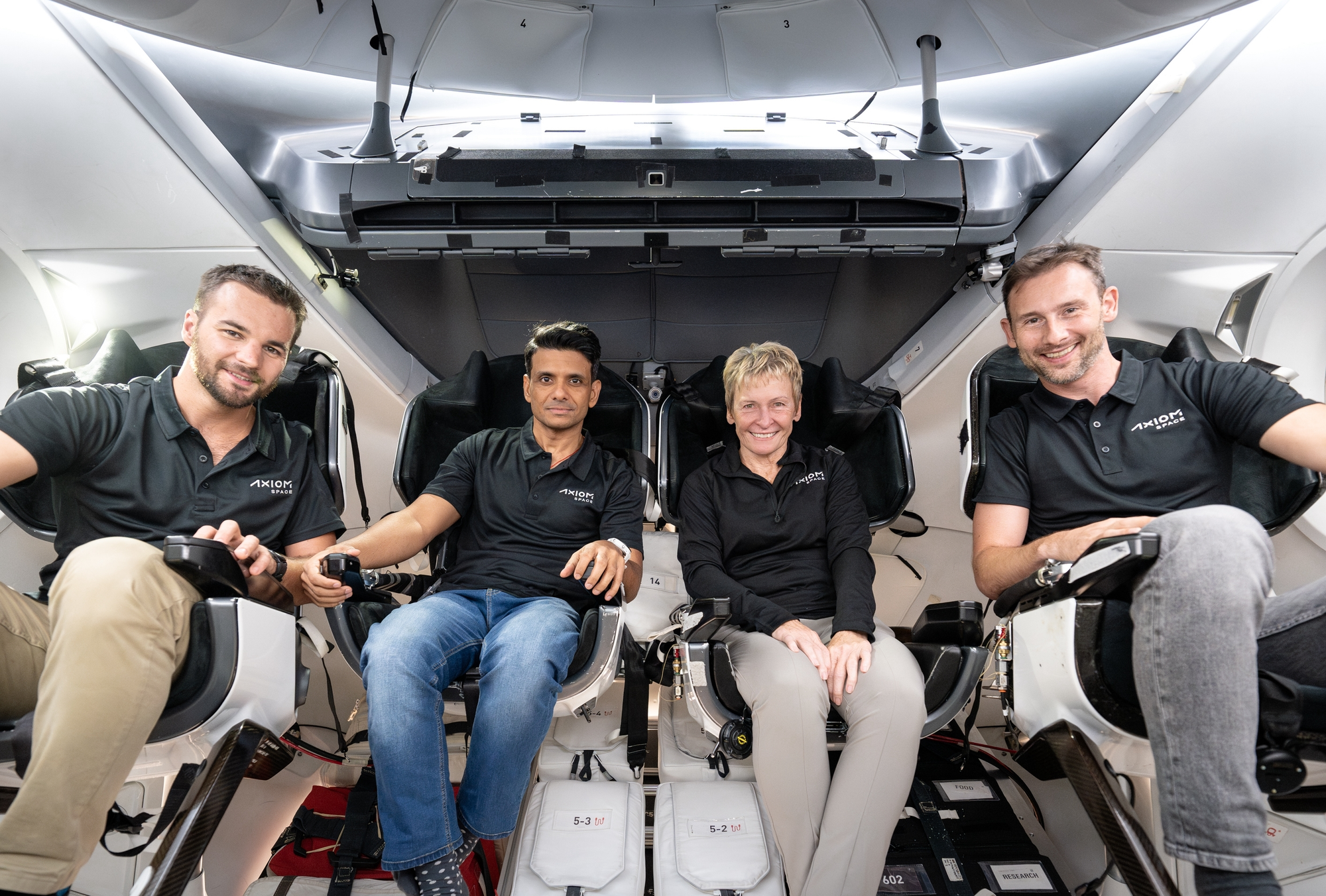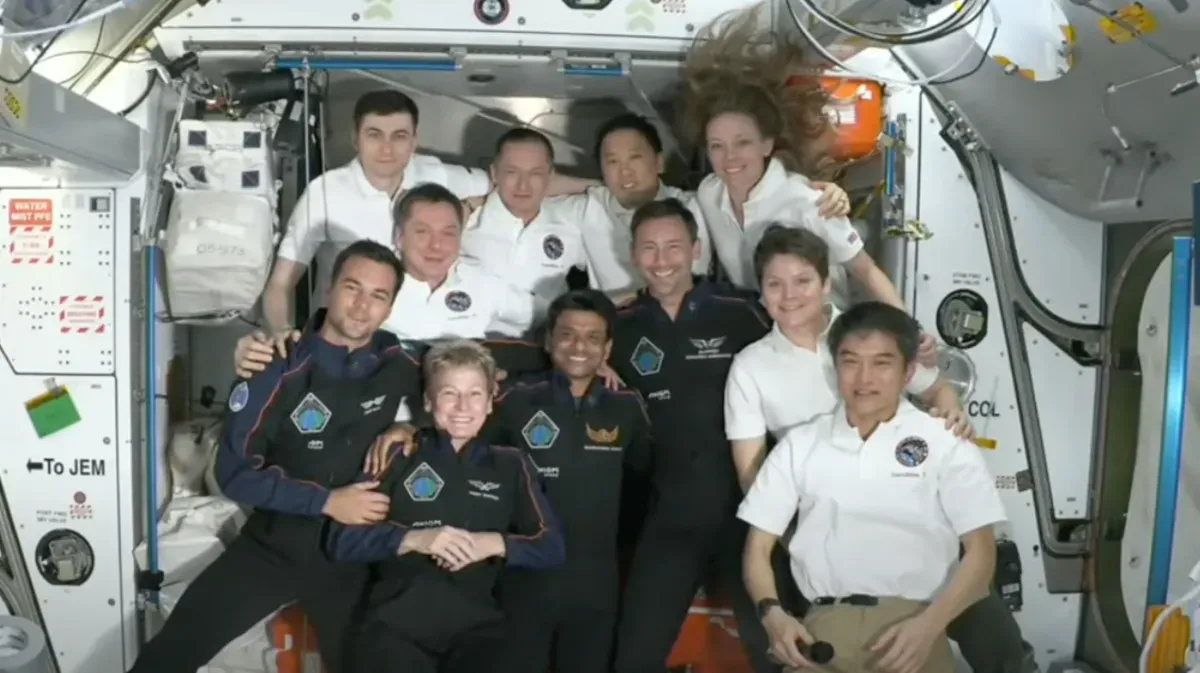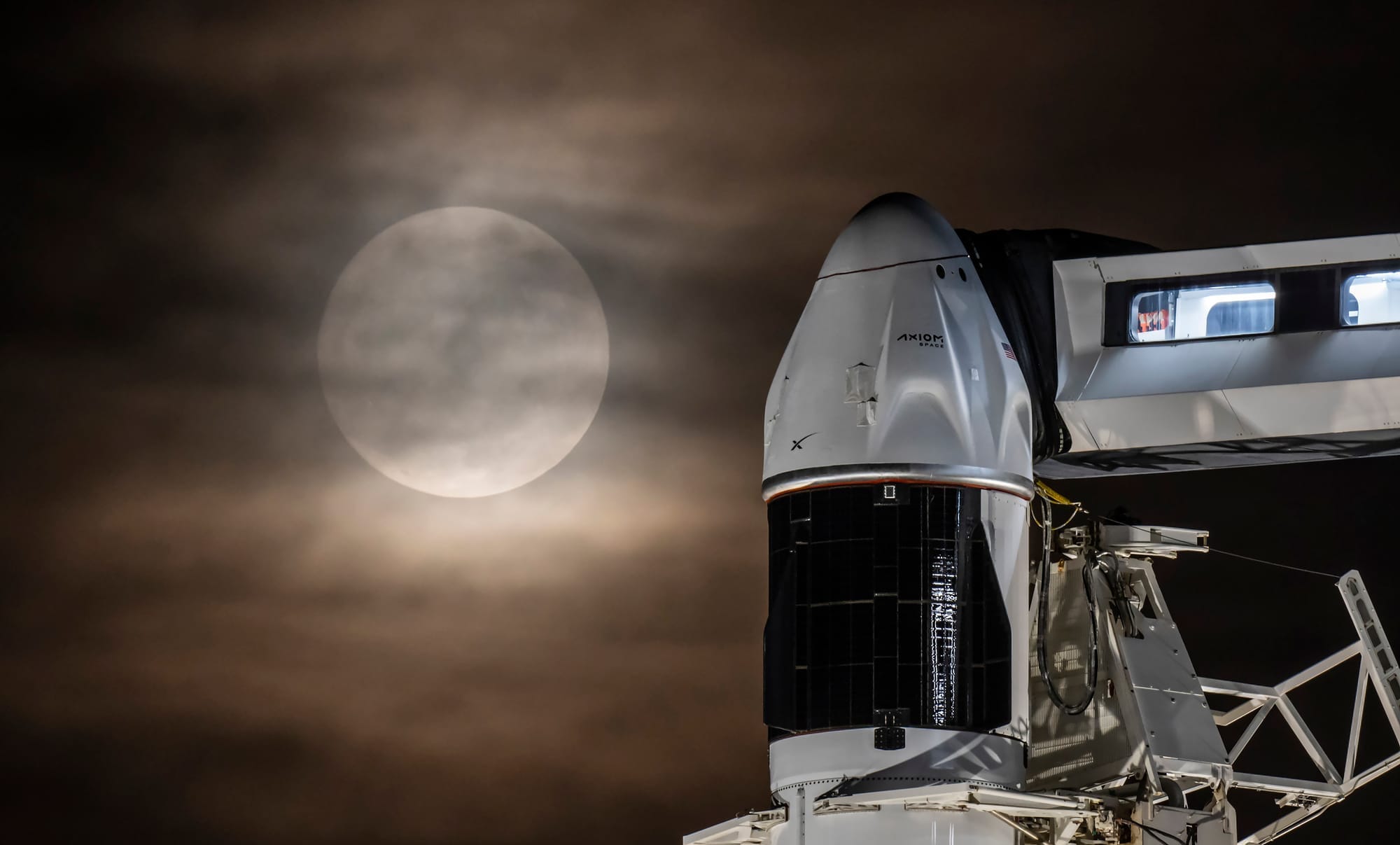Table of Contents
Axiom Space's Axiom-4 mission blasted off from Launch Complex 39A, in Florida, atop of a Falcon 9 at 07:31 am Universal Coordinated Time on June 25th, carrying Peggy Whitson, Shubhanshu Shukla, Sławosz Uznański-Wiśniewski, and Tibor Kapu into low Earth orbit to chase down the International Space Station.
Onboard the Axiom-4 mission are India, Hungary, and Poland's first astronauts in decades. Shubhanshu Shukla is the first Indian since Rakesh Sharma in 1984, a 41-year gap. Sławosz Uznański-Wiśniewski from Poland is the first since Mirosław Hermaszewski in 1978, a 47-year gap. Hungary's Tibor Kapu is the first since Bertalan Farkas in 1980, a 45-year gap. Those flights were all through the Union of Soviet Socialist Republics' Interkosmos program.
The crew of four spent around a day catching up to the space station in their Crew Dragon spacecraft, which they named 'Grace'. Whitson expanded on the name, sharing:
"We had an incredible ride uphill, and we now set our course for the International Space Station aboard the newest member of the Dragon fleet — our spacecraft, ‘Grace’. Grace is more than a name. It reflects the elegance with which we move through space against the backdrop of Earth. It speaks to the refinement of our mission, the harmony of science and spirit, and the unmerited favor we carry with humility. Grace reminds us that spaceflight is not just a feat of engineering, but an act of goodwill —for the benefit of every human, everywhere."
Supporting the crew and Crew Dragon 'Grace' into orbit was Falcon 9 booster B1094, performing its second flight and landing back at Landing Zone 1 in Cape Canaveral.
Falcon 9’s first stage booster has landed at Landing Zone 1 pic.twitter.com/I5gI376fca
— SpaceX (@SpaceX) June 25, 2025
Booster B1094 landing after supporting the launch of the Axiom-4 mission, via SpaceX on Twitter.
Crew Dragon 'Grace' safely carried its crew to the space station, docking to the Harmony modules space-facing port at 10:31 am Universal Coordinated Time on June 26th. Almost two hours later, following a series of leak and safety checks, Whitson, Shukla, Uznański-Wiśniewski, and Kapu entered the International Space Station.
While onboard the space station, the Axiom-4 crew will carry out a plethora of science. Research experiments from the Indian Space Research Organization focuses on microalgae studies and crop seed development in microgravity; the European Space Agency is researching extensive astronaut health monitoring, bone loss, and pharmaceutical testing; Hungary is looking into human microbiomes, cognitive function, and innovative propulsion systems; while Axiom Space's experiments specializes in supporting astronauts with medical conditions and cancer research in space. The full list of experiments is available here.
The Axiom-4 quartet is planned to spend two weeks on the International Space Station.
Who's onboard?

Peggy Whitson, from the U.S., is the Commander of the Axiom-4 mission, flying to space for the fifth time. She previously commanded the Axiom-2 mission in 2023 and participated in three long-duration spaceflights during her career at NASA. In total, she has spent 675 days in space.
Shubhanshu Shukla, from India, is the Pilot of the Axiom-4 mission for his first trip to space. He was selected in 2024 as one of India's first four astronauts in the 21st century, possibly to fly aboard the first crewed Gaganyaan mission within a few years. Prior to astronaut selection, he was a pilot in the Indian Air Force.
Sławosz Uznański-Wiśniewski, from Poland, is a Mission Specialist for the Axiom-4 mission, as part of his first spaceflight. He was selected as a member of the European Space Agency’s Astronaut Reserve Class of 2022 for potential missions to the International Space Station. Notably before his space career, he was the Engineer in Charge for the Large Hadron Collider from 2018 to 2020.
Tibor Kapu, from Hungary, is a Mission Specialist for the Axiom-4 mission for his first trip to space. In 2023, he was one of four Hungarians chosen for the Hungarian to Orbit Astronaut Program. Before being selected, he focused on space radiation protection at an aerospace technology company.
What is Crew Dragon?
Crew Dragon, or Dragon 2, is a partially reusable spacecraft developed by SpaceX. The primary use for Crew Dragon is to send crew to and from the International Space Station. SpaceX also performs free-flight missions with the spacecraft.
Crew Dragon consists of the capsule and trunk. The trunk is used to store unpressurized cargo as well as to have solar panels mounted on one side, to generate power, and radiators on the other, to dissipate heat generated inside. The trunk is not reused and burns up in the atmosphere after each mission. The capsule is where the crew will be during launch, landing, and while on their way to space.
Unlike the original Dragon capsule, the Crew Dragon capsule has a launch abort system consisting of eight SuperDraco engines. This abort system can also be used to bring the capsule to a soft touchdown in the event of four parachute failures. The capsule also has a nosecone that will fold out of the way in space to protect the docking hardware and forward-facing thrusters during launch and landing. The forward-facing thrusters are the main propulsion system for performing maneuvers while in flight. Up to four parachutes will deploy from the capsule during descent to allow it to splash down for recovery.
Crew Dragon was developed as part of NASA's Commercial Crew Program to regain crew access to the International Space Station from the United States of America after the retirement of the Space Shuttle. SpaceX currently has four other active Crew Dragon capsules: Endeavour, Resilience, Endurance, and Freedom.






